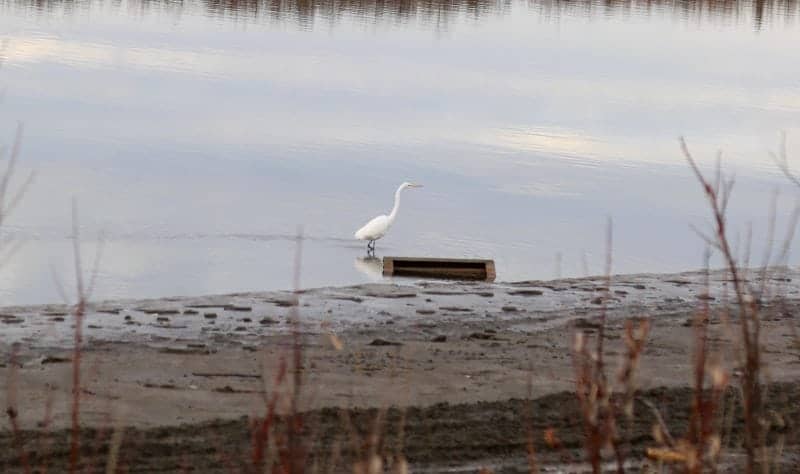A quiet Monday morning down by the boat launch turned into a monumental rush for avid birder Ray Suchodolski.

Stewart Burnett/���ϳԹ��� photo
“I’m looking along the shore and I see this white blob,” recalls Suchodolski, who doesn’t carry his binoculars with him this time of year, as most of the birds having gone south already.
“I look and it’s a bird. I’m looking at it and I say, no it can’t – what is that? I mean I’ve seen enough snow geese and swans and white birds to know it’s not a gull, it’s not a snow goose, it’s not a swan. It’s a totally different shape than either one. I said you know, it can’t be. I’m saying it can’t possibly be what I think it is. I’m totally incredulous. Holy ----, I was out of my skin.”
He recognized that it was an egret of some sort.
“This thing is 3,000 km out of its birding range, never happens,” said Suchodolski. “Until Monday. I went tearing home. I’m literally vibrating. I can’t believe this.”
He got his binoculars and bird book and came back to the boat launch, where he confirmed his identification of the bird being a great egret, with its yellow bill, long neck and black legs.
Roger Connelly and Helen Sullivan also spotted the bird before knowledge of its presence caught on in the community.
Kristina Hick, landbird biologist with the Canadian Wildlife Service, said there hasn’t been a reporting sighting of a great egret in the Northwest Territories since 1993, when one was seen in Yellowknife, making this the farthest north reported sighting of the bird in recorded Canadian history.
There was one sighting of a great egret reported in northern Alaska in 2007, but that was during summer.
“It is unusual for this species to be this far north in the fall when they should be migrating south,” said Hick.
The great egret spends its summers breeding in the United States and a few areas in southern Canada. It then migrates south for the winter, travelling as far as southern Central America.
“This appears to be a phenomenon called reverse migration that is used by researchers to explain the presence of vagrants in the fall – i.e. when birds migrate in the opposite direction than expected,” explained Hick.
“The causes of these unusual migratory movements are unknown but they could be related to birds becoming disoriented and lost due to an anomaly with their ‘internal navigational system,’ mistaking north for south; their young age and inexperience using navigation aids – visual, olfactory and magnetic cues – or due to extreme weather patterns.”
Peter Clarkson, another wildlife enthusiast in town, said he’s heard reports that the bird is feeding at least.
“We’re all just hoping that it enjoys the weather here while it can but then flies out with the geese and the seagulls when things start to get a little bit colder,” he said.
“We don’t want to go down to the boat launch and see it frozen to the shore.”
The bird had been hanging around Inuvik all last week.
For as excited as Suchodolski was to see the great egret, he too hopes it finds its way south.
“This is an amazing find,” he said. “In the birding world, this is right up top… I wish to hell it would leave. I don’t want it to die.”


